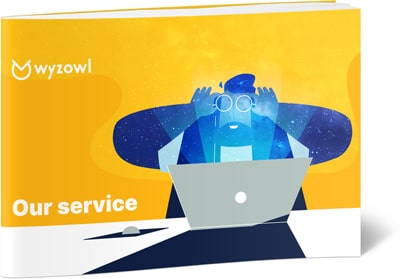Last updated on 7th November 2023
Your explainer video should be an extension of your brand, so choosing the right style is a must!
Explainer videos are proven to increase user understanding, improve conversion rates, and reduce support queries. So getting one for your business would be a pretty great idea!
One of the most important factors to consider when creating an explainer video is style. Your explainer video should be an extension of your brand; when people watch it they should think about your brand – style can help them do that.
In order to choose the right style for your explainer video, you need to think about what you want to convey, and what style would best help you to achieve that. In this article, we’re going to look at a couple of different explainer video styles so you can choose the right one for your business.
1. Screencasts
Screencast videos are recorded directly from within your app or website in order to show users how it works.
These simple, low-budget videos are perfect for educating current customers and onboarding new ones. As screencast videos are more about education and less about branding, they can engage customers for a longer period of time than other explainer video styles.
Screencast videos work well for brands with complicated products that require detailed instructions before users can use them to the best of their ability. However, it’s important to think about the longevity of your video. If you update your application, it’s likely that you will need to update your video, too.
2. Whiteboard
Whiteboard videos have been rising in popularity for some time. This sudden rise in popularity could be thanks to one of many reasons: whiteboard videos are inexpensive, simple to make, and allow you to portray complex topics to your viewers with simple imagery.
With whiteboard videos, users can see the story unfolding in real-time. This sense of transparency is great for engagement because viewers stay tuned as they want to know what is going to happen next.
Although not as visually attractive as some other explainer video styles, whiteboard videos make it easier for viewers to learn as they mimic how we learn in educational classes. This makes whiteboard videos great for pitching concepts and ideas, and also corporate training videos.
Watch this whiteboard video to see what we mean:
3. Kinetic typography
Typography can be very powerful. Add movement to that, and it can create even more of an impact.
Here is an example of a very powerful kinetic typography video:
With kinetic typography, you can emphasise important messages and drive home key points to your viewers. Typography videos are engaging because it can be quite mesmerising to watch text spelled out before you on screen. Just as whiteboard videos keep people watching because they want to know what happens next, kinetic typography does the same.
Kinetic typography is great for start up businesses that perhaps don’t have the budget to create a fully animated video, but would like to show some kind of movement on screen. It is also excellent for brands with a powerful message to convey.
4. Animation
Animated videos are loved by both customers and companies alike.
Why?
They are fun, playful, engaging, entertaining — with animation you can tell any story you want, without it costing the earth! For example, if you wanted to set your video in space, it would cost the same as setting it in an office. This limitless nature of animation is one of the main reasons why 44% of marketers primarily use animated explainer videos.
When creating an animated explainer video, it’s important to know whether to choose a 2D or 3D style. 2D animated videos are probably the most recognisable form of animation and are cheaper to make than 3D. Here’s an example:
3D animated videos aren’t as popular, mainly because of the cost, but this can be a good thing as it can help you stand out in the market.
With an animated video, you are more likely to create a personal connection with your audience which will encourage them to share the video with their friends and family.
5. Live action
Sometimes, the best way to represent your brand in your explainer video is to show the people behind the scenes.
You can really get your personality across with a live action video and show off the human side of your brand. Customers love to see the people behind the product, it gives them a better sense of trust and this will encourage them to do more business with you.
Another pro to live action videos is that they are quicker to produce than a lot of other videos on this list. You could set up your camera in the morning and upload your video by the afternoon!
6. Stop motion
Stop motion is a very traditional form of animation. The videos are created by taking several photos of an object, or objects, moving them slightly between each photo. This creates the illusion of movement.
As you can imagine from that brief description, stop motion videos are very difficult to make, so it’s important to be sure of the concept before beginning. To create a good stop motion video takes a lot of expertise and skill, which is why these videos tend to be expensive to make.
Despite all of the extra effort, stop motion videos create a beautiful finished product that easily captures the imagination of viewers.
Take a look at this stop motion video from Chipotle:
Final thoughts
Hopefully you now have a clearer understanding of how to choose the right style for your explainer video. On the other hand, maybe you feel bombarded with information! Here’s one last piece of advice:
The trick is to utilise different styles at different times! For example, choose animation for your main explainer video, but then screencast videos to onboard new customers, and live action videos for your testimonials!






